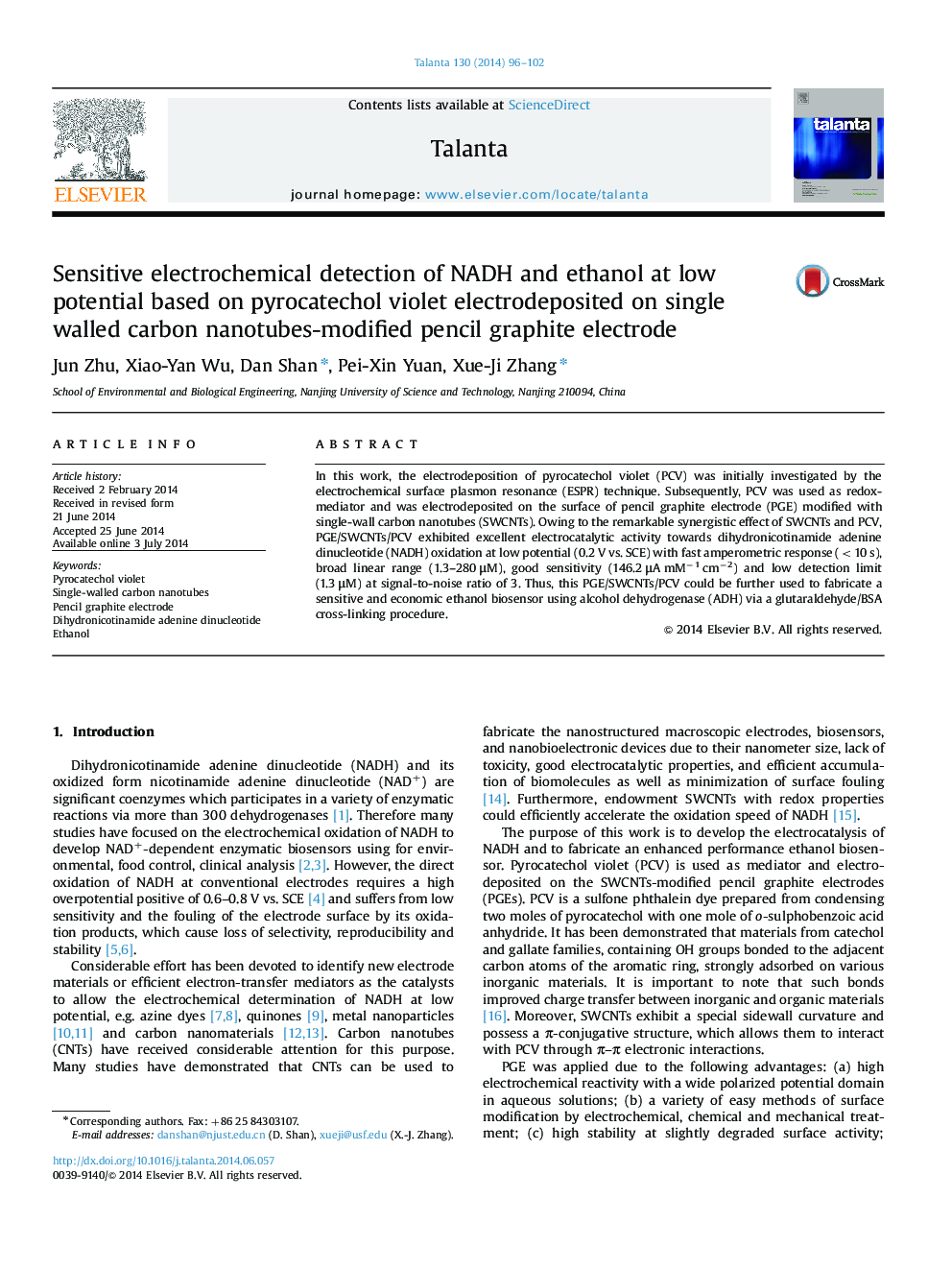| Article ID | Journal | Published Year | Pages | File Type |
|---|---|---|---|---|
| 1243565 | Talanta | 2014 | 7 Pages |
•A novel NADH and ethanol sensor was constructed based on PCV electrodeposited on SWCNTs modified GCE.•The electrochemical detection of NADH and ethanol was applied at low potential.•The synergic effect of PCV and SWCNTs resulted in the sensor surface of high hydrophilicity and the fast electron transfer.•Three-dimensional network of SWCNTs improves the surface coverage of PCV.
In this work, the electrodeposition of pyrocatechol violet (PCV) was initially investigated by the electrochemical surface plasmon resonance (ESPR) technique. Subsequently, PCV was used as redox-mediator and was electrodeposited on the surface of pencil graphite electrode (PGE) modified with single-wall carbon nanotubes (SWCNTs). Owing to the remarkable synergistic effect of SWCNTs and PCV, PGE/SWCNTs/PCV exhibited excellent electrocatalytic activity towards dihydronicotinamide adenine dinucleotide (NADH) oxidation at low potential (0.2 V vs. SCE) with fast amperometric response (<10 s), broad linear range (1.3–280 μM), good sensitivity (146.2 μA mM−1 cm−2) and low detection limit (1.3 μM) at signal-to-noise ratio of 3. Thus, this PGE/SWCNTs/PCV could be further used to fabricate a sensitive and economic ethanol biosensor using alcohol dehydrogenase (ADH) via a glutaraldehyde/BSA cross-linking procedure.
Graphical abstractFigure optionsDownload full-size imageDownload as PowerPoint slide
